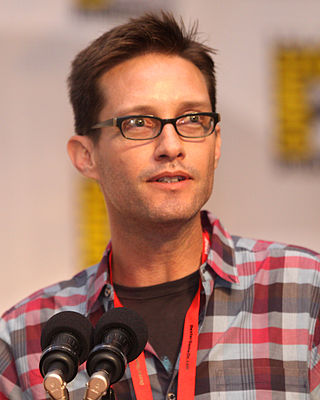Steven Weitzman may refer to:
- Steven Weitzman (sculptor) (born 1952), American public artist and designer
- Steven Weitzman (scholar) (born 1965), American scholar of Jewish studies and religious studies
Steven Weitzman may refer to:
John Stevens may refer to:
Stephen, Steven, or Steve Kent may refer to:
Weißmann is a German surname meaning "white man". Common variants in spelling are Weismann, Weissman, Weisman, Waismann, and Vaisman.
Weitzmann or Weitzman is a surname, a variant of Weizmann. Notable people with the surname include:
Rabbi Yehoshua Weitzman is an Israeli Rosh Yeshiva, heading Yeshivat Ma’alot Ya’akov, and prominent as a teacher and scholar of Torat Eretz Yisrael.

Matthew E. Weitzman is an American producer and writer. He was one of the creators of American Dad! along with Seth MacFarlane and Mike Barker. Barker and Weitzman were originally writers for Family Guy.
Steve, Steven or Stephen Cohen may refer to:

Michael Wayne Barker is an American producer, writer and former voice actor best known for his work on the Fox adult animated television series Family Guy and for co-creating American Dad!. He has also done voice work on both series.

Bonnetia is a genus of flowering plants in the family Bonnetiaceae. Most of the roughly 30 species are shrubs. The remaining species, all trees, are among the dominant species in the forest vegetation on the tepui plateaus of northern South America, such as B. roraimae on the summit of Mount Roraima.
Steven, Stephen or Steve Mason may refer to:
Freziera is a Neotropical genus of trees in the family Pentaphylacaceae. It contains the following species :
Martin Lawrence Weitzman was an economist and a professor of economics at Harvard University. He was among the most influential economists in the world according to Research Papers in Economics (RePEc). His latest research was largely focused on environmental economics, specifically climate change and the economics of catastrophes.
Noelle Bassi is a butterfly swimmer from the United States, who won the silver medal in the women's 200m butterfly event at the 2003 Pan American Games. She is best known for her 2004 National Champion title in the 200m butterfly, and her placement on the top 25 world/top 10 U.S. rankings lists for six consecutive years. Bassi is a three-time Olympic Trial Qualifier, and a 2004 Olympic Trial Finalist for the U.S. team.
Stephen, Steve, or StevenCollins may also refer to:
Steven Barnett may refer to:
Armen Weitzman is an American actor and comedian best known for playing Garfield in the Comedy Central series Another Period.

Steven Weitzman is an American public artist and designer known for his figurative sculptures, murals, and aesthetic designs for highway and bridge infrastructure projects.
Frederick Douglass was an African-American social reformer, abolitionist, orator, writer, and statesman.
Steven Phillip Weitzman is an American scholar of Jewish studies and religious studies, with interests that include the origins and early history of Judaism and the history of the Bible's reception. He has served as the Ella Darivoff Director of the Herbert D. Katz Center for Advanced Judaic Studies at the University of Pennsylvania since 2014. He is also the Abraham M. Ellis Professor of Semitic Languages and Literatures in the department of Religious Studies at the University of Pennsylvania.
Evelyn Stevens may refer to: